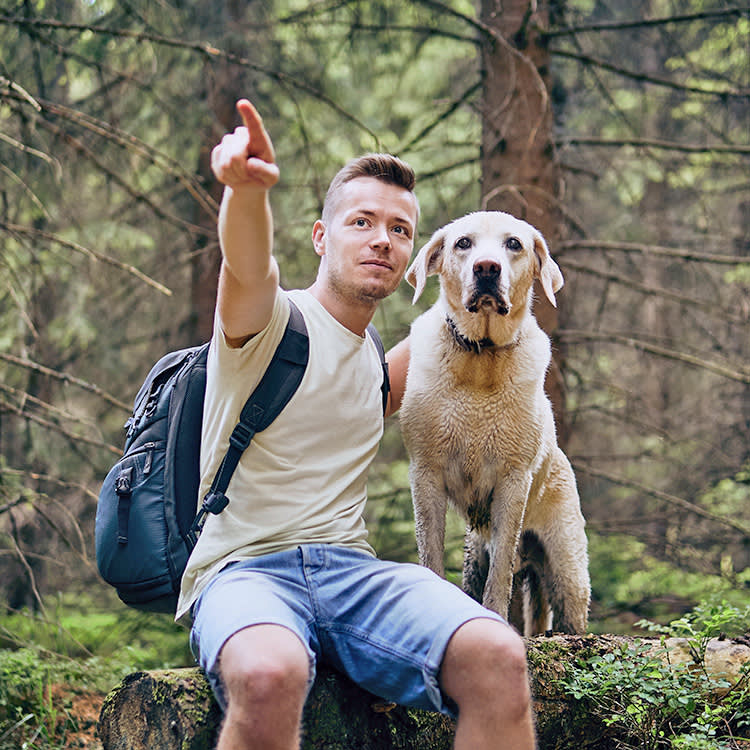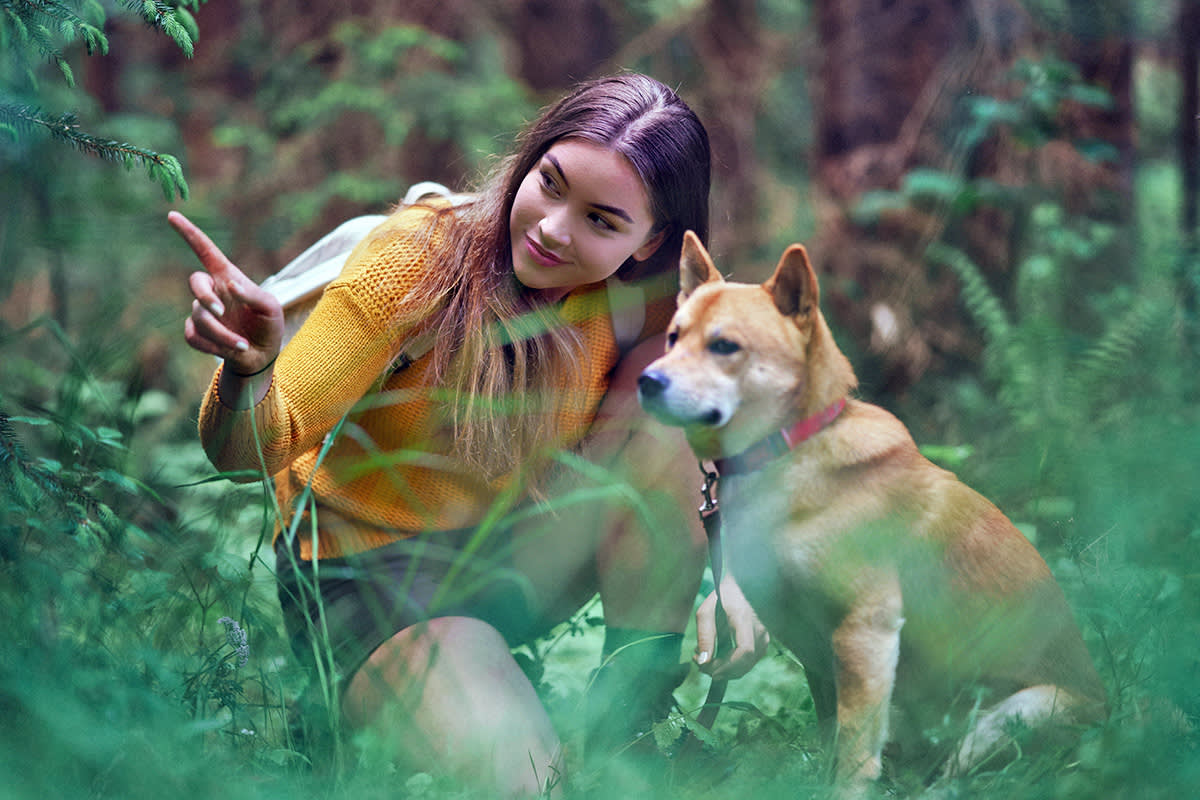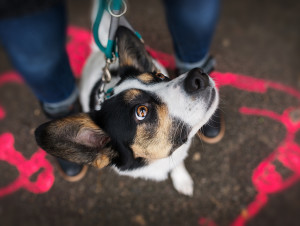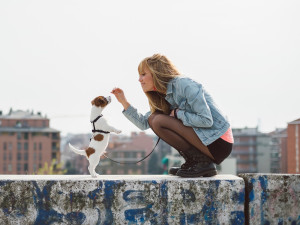New Study Finds the Best Way to Get a Dog’s Attention
It's a combo of two things.

Share Article
It’s not always easy to get a dog to pay attention to what you want them to. We all know that please-don’t-make-me-get-off-the-couch feeling that strikes when a pup can’t find the tennis ball that’s right there — or the silly, I-hope-I-don’t-see-anyone-I-know feeling when desperately trying to avert your dog's gaze when a squirrel pops up in the park. But thanks to new research, our days of being ignored may be over. A new studyopens in new tab published in Proceedings of the Royal Society B found that you can get your dog to focus on an object by pointing and staring at the same time.
The study
Scientists outfitted twenty dogs in headgear that, using cameras, tracked exactly where the pups gazed. An experimenter then hid a treat inside one of two bowls and knelt in front of the dogs. The dog’s pet parent handled the pup on a leash.
The experimenter then placed the bowls in front of her, called the dogs’ name, and signaled for the dog to go toward the baited bowl. Her signals varied: In some tests, she pointed, and in others, she looked at the bowl or pretended to throw a ball toward the bowl. Dogs were then released by their handlers to find the treat.
Whether or not the dog approached the correct bowl varied significantly based on the signal they were given. When paired together, two signals won out above the rest. “The combination of gazing and pointing cues was particularly effective in directing the dogs’ attention to the baited bowl and influencing their subsequent choices,” wrote Christoph J. Völteropens in new tab, the study’s lead author.
When the experimenter both pointed and stared at the correct bowl, dogs most frequently shifted their gaze “from the experimenter’s face to her hand and from the hand to the correct bowl,” Völteropens in new tab explained.
Similarly, when the experimenter pretended to throw a ball toward the baited bowl, the dogs looked the correct direction — but they didn’t look directly at the bowl, and they didn’t choose it above chance levels. When the experimenter only pointed, dogs looked toward her hand, but they didn’t shift their gaze toward the bowl as frequently as they did when the point was accompanied by a stare.
Researchers suggest that this may be because dogs have a hard time disengaging from eye contact when people are looking at a dog while pointing. They add that both gaze and pointing are somewhat effective signals on their own, so they may combine to an even more effective one. “These findings may also explain why previous studies have struggled to find robust evidence for gaze and point following when these cues were presented in isolation,” Völteropens in new tab wrote. “The combination of these cues seems key.”

Sio Hornbuckle
Sio Hornbuckle is the Assistant Editor at Kinship, where they frequently write for the site. As a writer, they specialize in pet news, animal science, and pop culture. They live in New York City with their cat, Toni Collette.
Related articles
![Dog on leash sitting on a colorful street and looking attentive at their pet parent]()
How to Get Your Dog to Pay Attention to You
Here are some simple steps to pry your pup away from that one spot in the yard they’re obsessed with.
![Boston terrier being stubborn]()
Dog Training — DIY or Hire a Pro?
When it’s time to call in reinforcements.
![Young blonde woman with a Jack Russell puppy during spring in the city.]()
The Best Training Treats for Dogs in 2025
The most mouth-watering treats for training your pup.
![A woman in a black coat squatting down to speak to her Dalmatian dog who is looking away from her to the camera on a dirt path next to a pond on with fall leaves around]()
Hey, Why Is Your Dog Ignoring You?
Six tips and tricks to get your dog to listen to you.
![Short-haired blonde woman in a tan sweater and blue jeans sitting on a bench talking to her Beagle mix dog who is looking up at her]()
How You Say Something to Your Dog Matters More Than What You Say
TikTok pet parents have made this clear: Tone matters. Celebrity dog trainer Nicole Ellis says dogs can hear “stress in our voice — whether directed at them or when they hear us talking to others.”
![Jack Russell puppy grunting while laying on blanket and crying out]()
Listen Up! Your Puppy Is Trying to Talk to You
How to make sense of all those grunts and whines.






